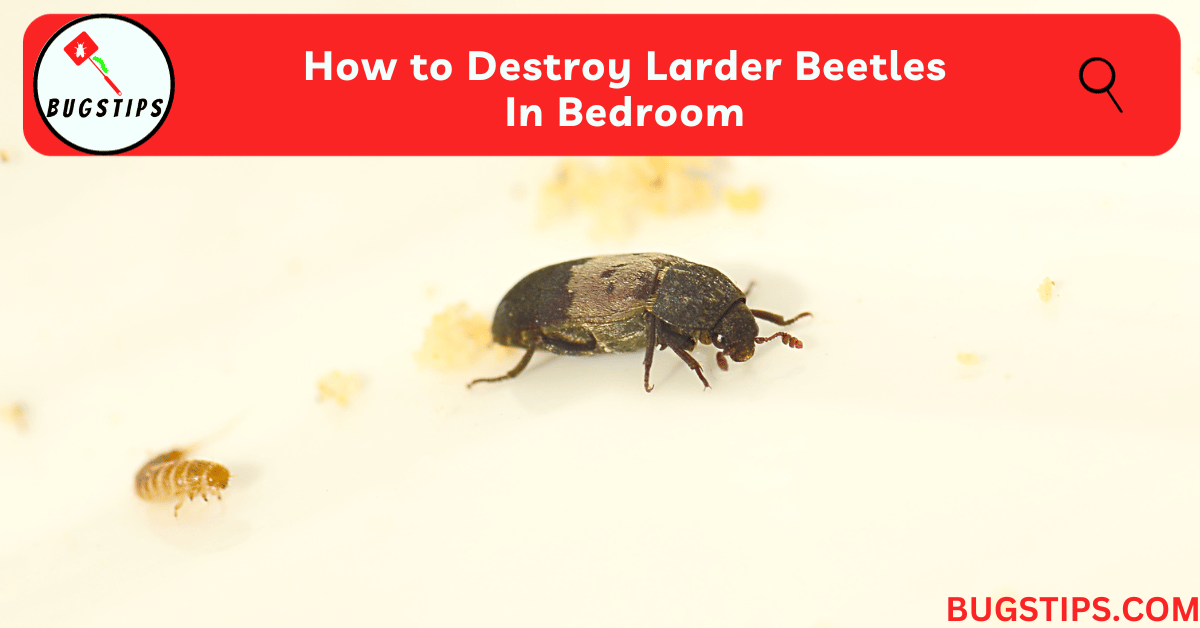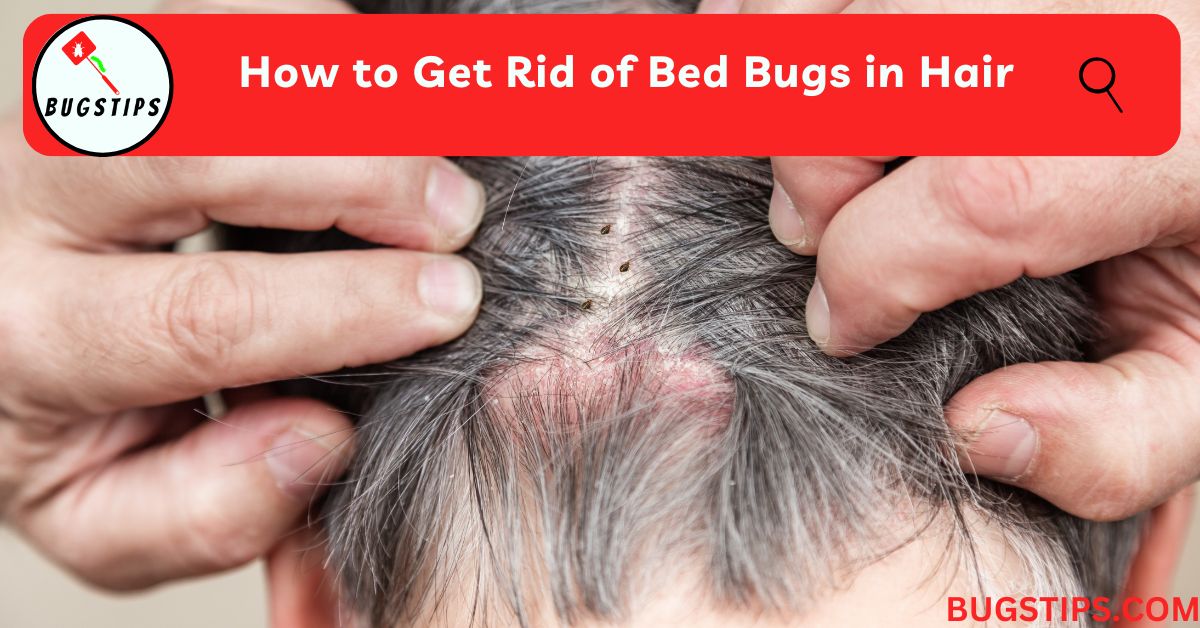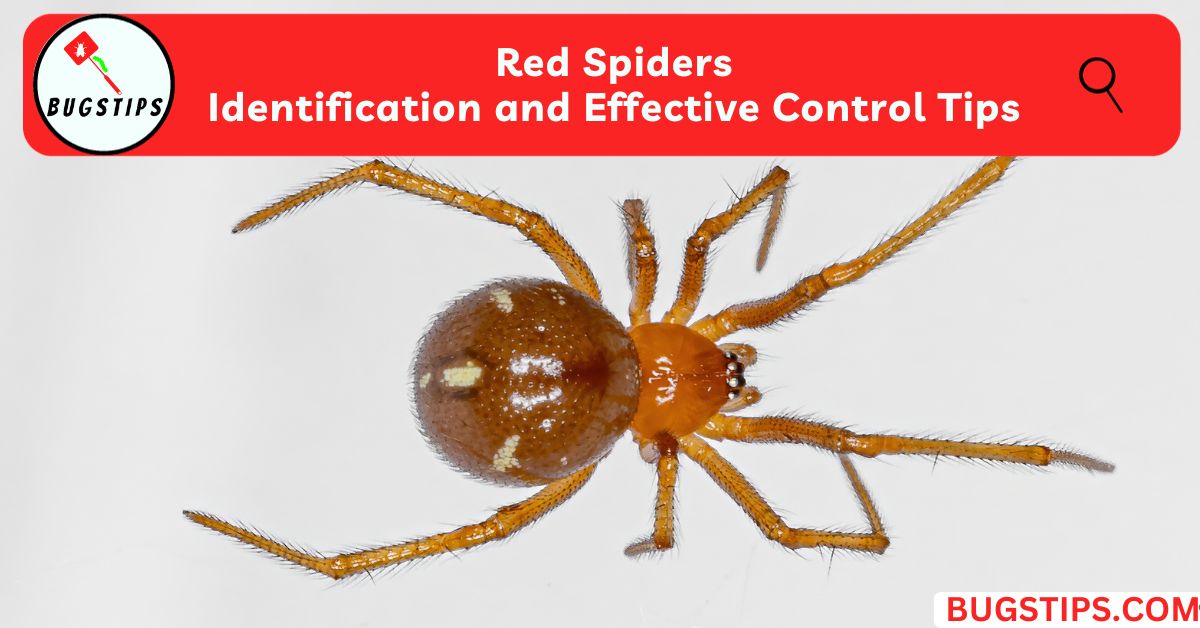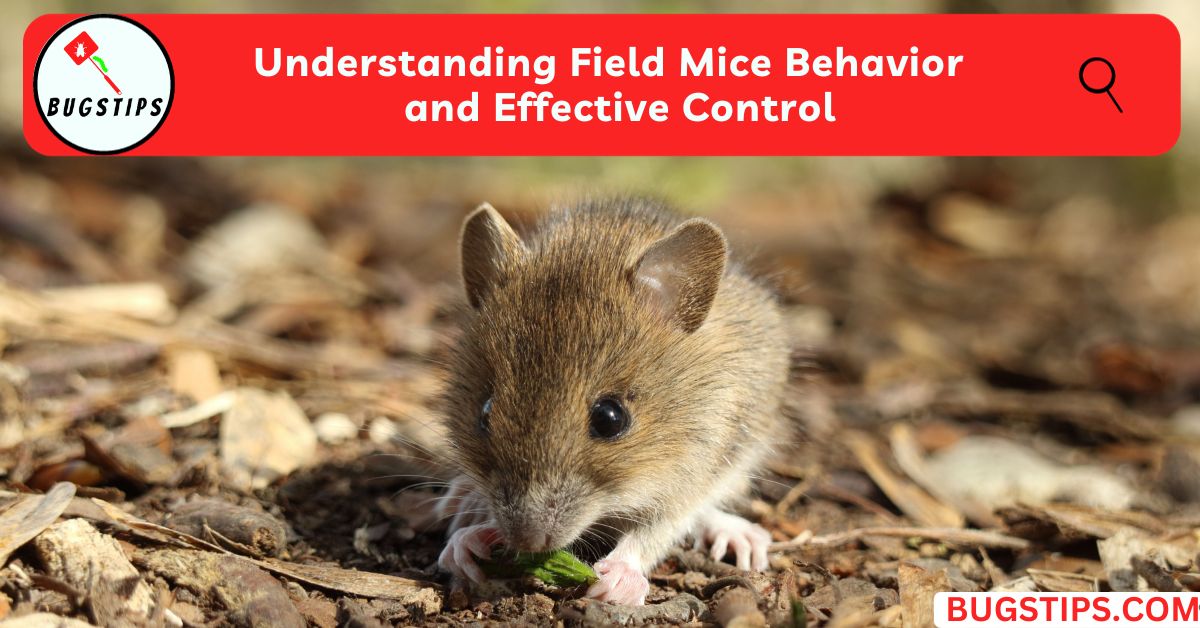This post may contain affiliate links which means as an Amazon Associate, this site may earn a small commission on qualified purchases made through links at no extra cost to you. Learn more on Affiliate Disclosure
Finding an unfamiliar insect or bug crawling across your bedroom floor or ceiling can be unsettling.
Even more concerning is noticing multiple tiny beetles emerging from pantries, cupboards, and other stored food areas.
If the small, oval beetles are various shades of brown, they may be pantry pests known as larder beetles.
Larder beetles in bedrooms are not uncommon, as these insects will spread throughout a home seeking food sources after infiltrating pantries and kitchens.
In this article, we’ll discuss how to identify a larder beetle infestation in the bedroom, where they come from, whether finding one larder beetle signals a larger issue, getting rid of larder beetles, and prevention methods.
Read on to learn all about larder beetles in bedrooms and how to protect your home from these pesky pantry pests.
Related Article – 14 Small Tiny Brown Bugs In The House
Why Are Larder Beetles In My Bedroom?
If you’ve discovered small brown beetles in your bedroom, the most likely culprit is the larder beetle.
Larder beetles are common pantry pests that feed on a variety of dried foods often kept in kitchen cupboards and pantries, such as flour, cereals, pet food, spices, dried meats, nuts, and more.
Bedrooms don’t typically contain food sources, so why do larder beetles end up there?
The beetles are skilled fliers and can easily spread from room to room in search of edible materials.
Their small size also allows them to crawl through cracks, crevices, vents, and plumbing.
Larder beetle larvae hatch from eggs laid near food sources, eventually crawling away in pursuit of additional food.
Larder beetles may find their way into bedrooms via infested packages, bags, boxes, or clothing stored in closets and dressers.
They follow food odors and residue carried on containers and clothing from the kitchen pantry. Once in the bedroom, females will lay new eggs, continuing the cycle.
So while you may not store food in the bedroom, larder beetles can still find their way in and reproduce.
You May Also Like – Cockroach in My Room Can’t Sleep
How To Identify Larder Beetles In Bedroom
Adult larder beetles are small, oval-shaped beetles that measure about 1/3 inch long. They can be various shades of brown, often with a yellowish hue.
Darker bands may appear on their wing covers. Larvae are fuzzy and worm-like, with a brown or black head and a yellowish body.
Inspect food storage areas like pantries and cupboards for signs of infestation.
Look for the beetles themselves, larvae, and also cast larval skins that look like small brown specks.
Pay special attention to areas where dry goods like flour, cereals, and pet food are stored.
Related Article – 15 Tiny Yellow Bugs
Also check bedrooms thoroughly, including along baseboards, window sills, closets, and furniture crevices where they may hide.
Look for very small holes in fabrics, clothing, linens, and other materials which may indicate larder beetle larval damage as they feed.
You may also find light brown powdery residue around cracks and crevices – this is typically made up of shed skins and fecal matter.
The sooner larder beetle infestations are identified, the better chance you have of eradicating them before populations grow.
Related Article – 10 Easy Ways To Get Rid of Worms in Bed
Does One Larder Beetle Mean Infestation?
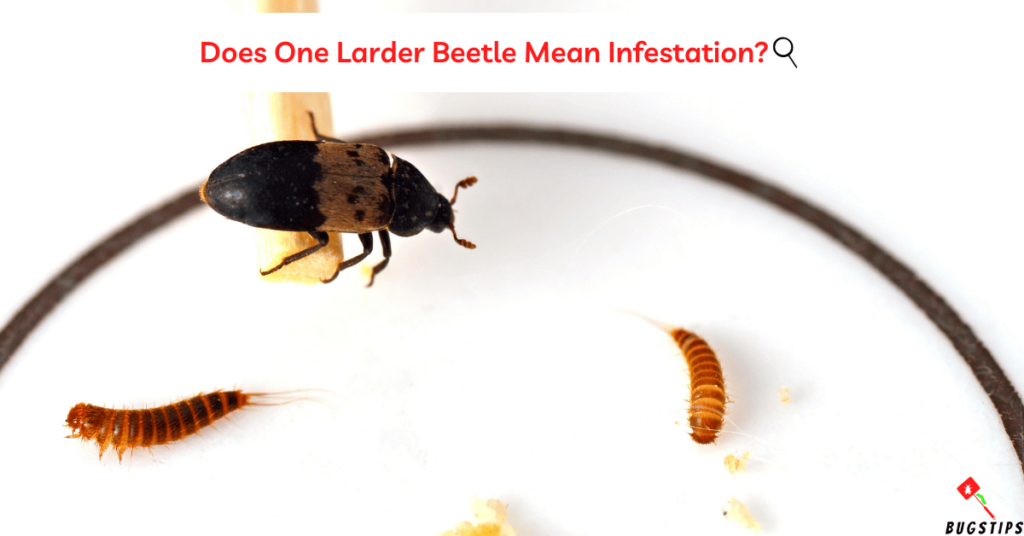
Seeing a single larder beetle in your home does not necessarily mean you have a full-blown infestation requiring major pest control intervention.
A lone larder beetle likely made its way inside inadvertently. It may have hitched a ride in on clothing, a package, or even flew in an open window or under a door.
Without access to significant food sources, individual beetles often die off on their own.
However, a single larder beetle can indicate there may be more around that you haven’t noticed yet.
Check pantries, cupboards, and other food storage areas carefully for additional beetles.
Also inspect bedrooms thoroughly, especially along baseboards, window sills, and closets.
Look for tiny larvae as well.
If multiple larder beetles or larvae are discovered after finding that first beetle, it likely signals a small infestation is underway.
You May Also Like – 12 Tiny Black Bugs on Window Sill
How To Get Rid Of Larder Beetles
If you’ve determined a larder beetle infestation in the bedroom, take action right away to get rid of them before they multiply and spread further.
Here are effective methods for eliminating larder beetles in bedrooms.
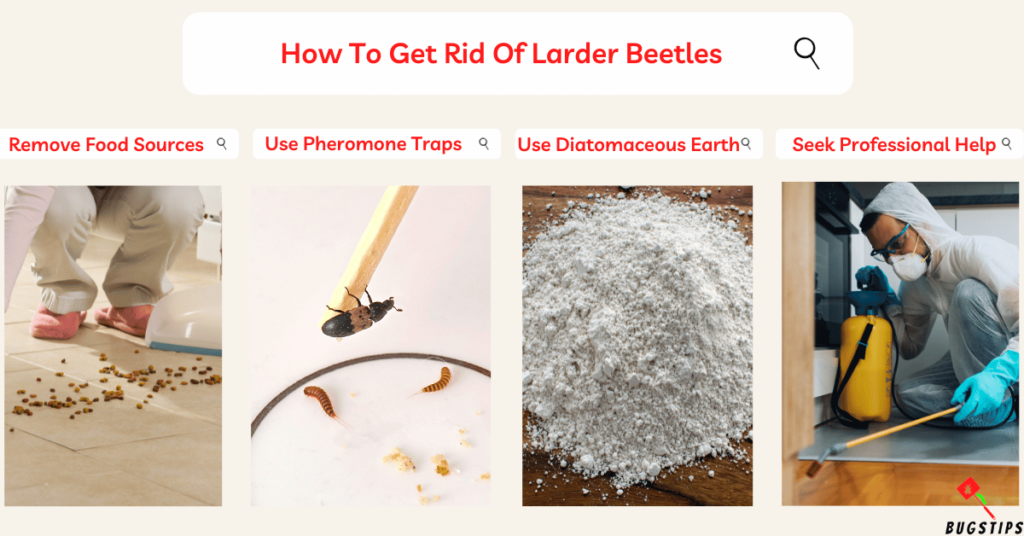
Remove Food Sources
- Larder beetles won’t hang around without access to food.
- Thoroughly clean pantries, cupboards, pet food containers, and anywhere else they may be feeding.
- Check stored boxes, bags, and clothing for spilled food residue.
- Vacuum and wipe down shelves.
- Freezing flour, grains, and cereals for 4-7 days can kill eggs and larvae.
Use Pheromone Traps
- Special pheromone traps contain synthetic larder beetle pheromones that attract both male and female beetles.
- Traps capture them on adhesive boards so they can’t escape.
- Use traps in infested areas and check them regularly to gauge the size of the infestation.
Apply Diatomaceous Earth
- Diatomaceous earth is a natural insecticide made from fossilized algae.
- Sprinkle this abrasive dust in cracks and crevices, under furniture, along baseboards, etc.
- The sharp particles damage the protective outer layer of larder beetles, leading to dehydration.
Seek Professional Treatments
- For serious infestations, professional pest control treatments like liquid insecticide sprays or fumigation of furniture and clothing may be needed.
- This is the most effective way to fully eliminate and prevent future larder beetle populations.
Related Article – How To Get Rid of Ants in Bedroom
Are Larder Beetles Harmful?
Larder beetles are considered more of a nuisance and contaminant threat than a danger to human health. However, they can cause some concerns, including,
Food Contamination
- Large infestations can lead to larvae and adults crawling over and contaminating opened food products.
- This renders the items inedible due to possible bacteria contamination.
Allergies
- The tiny hairs of larder beetle larvae can trigger allergic reactions in some individuals if there is prolonged exposure to larval remnants and frass.
- Asthma may also be aggravated.
Structural Damage
- Over time, large infestations can cause damage to wood surfaces and fabrics as larvae feed.
- Adults don’t feed but can also chew on materials.
Stored Item Damage
- Larvae chew holes in fabrics, paper products, collections, and more when items are stored in infested areas.
- Eggs are even laid directly on materials.
The beetles themselves do not directly harm or transmit disease to humans or pets.
But taking steps to get rid of infestations is advisable to avoid the above concerns and preserve your home environment.
You May Also Like – 22 Bugs with Hard Shells
How Long Do Larder Beetles Live?
Larder beetles have a relatively short life span compared to other pantry pests.
The adult beetles live approximately 2 to 3 months on average if provided with adequate food sources and suitable environmental conditions.
Males may live a bit longer than females.
After mating, female adults can lay up to 75 eggs over a 2 to 3-week period before dying.
The tiny, white eggs hatch in 11 to 19 days. Larvae emerge and go through several molting stages over 4 to 10 weeks as they feed and grow.
Once mature, larvae construct cocoons made of shed larval skins, grain dust, and frass stuck together with secretions.
Inside the cocoons, they transition into pupae, then emerge after 1 to 3 weeks as adult beetles, completing the cycle.
With larder beetles producing multiple generations per year in ideal conditions, populations can quickly rise if not managed.
However, their relatively short life span of just a few months presents opportunities to disrupt the breeding cycle through diligent monitoring, sanitation, and pest control measures.
With work, infestations can be eliminated before reaching problematic levels.
Related Article – 13 Bugs That Look Like Black Sesame
Final Thoughts
Finding larder beetles in your bedroom can be alarming at first.
But with proper identification, diligence, and pest management, you can eliminate them from this space and prevent future infestations.
Check all corners, crevices, furniture, and storage areas carefully for the first signs of larder beetles.
The sooner they are detected, the faster you can take action before populations multiply.
Implement thorough sanitation and vacuum all possible food residue where beetles may have traveled from the kitchen or pantry.
Traps, natural insecticides, and professional treatments, when needed, can all help rid bedrooms of larder beetles.
Above all, don’t tolerate larder beetle infestations anywhere in your home.
Stay vigilant in monitoring for signs like small holes in fabrics, cast skins, and the insects themselves.
Stop them in their tracks before they become a nuisance you can’t sleep at night with!
FAQs
How do larder beetles enter the bedroom?
Larder beetles can crawl into bedrooms through cracks, vents, under doors, and through walls from infested kitchen pantries.
They also hitch rides in clothing, linens, and boxes brought from the kitchen.
Can larder beetles fly?
Yes, adult larder beetles are capable fliers and can spread by flying from room to room in search of food sources.
Their small size enables them to fly through open windows or cracks.
Is it safe to sleep in a room with carpet beetles?
Sleeping in a room with larder beetles is likely safe, but allergies or asthma symptoms provoked by larvae and cast skins may make rest uncomfortable for sensitive individuals.
Resources – (for further reading)
University of Minnesota Extension – Larder beetles
UW-Madison – Larder Beetles – Wisconsin Horticulture
Penn State Extension – Larder Beetle

